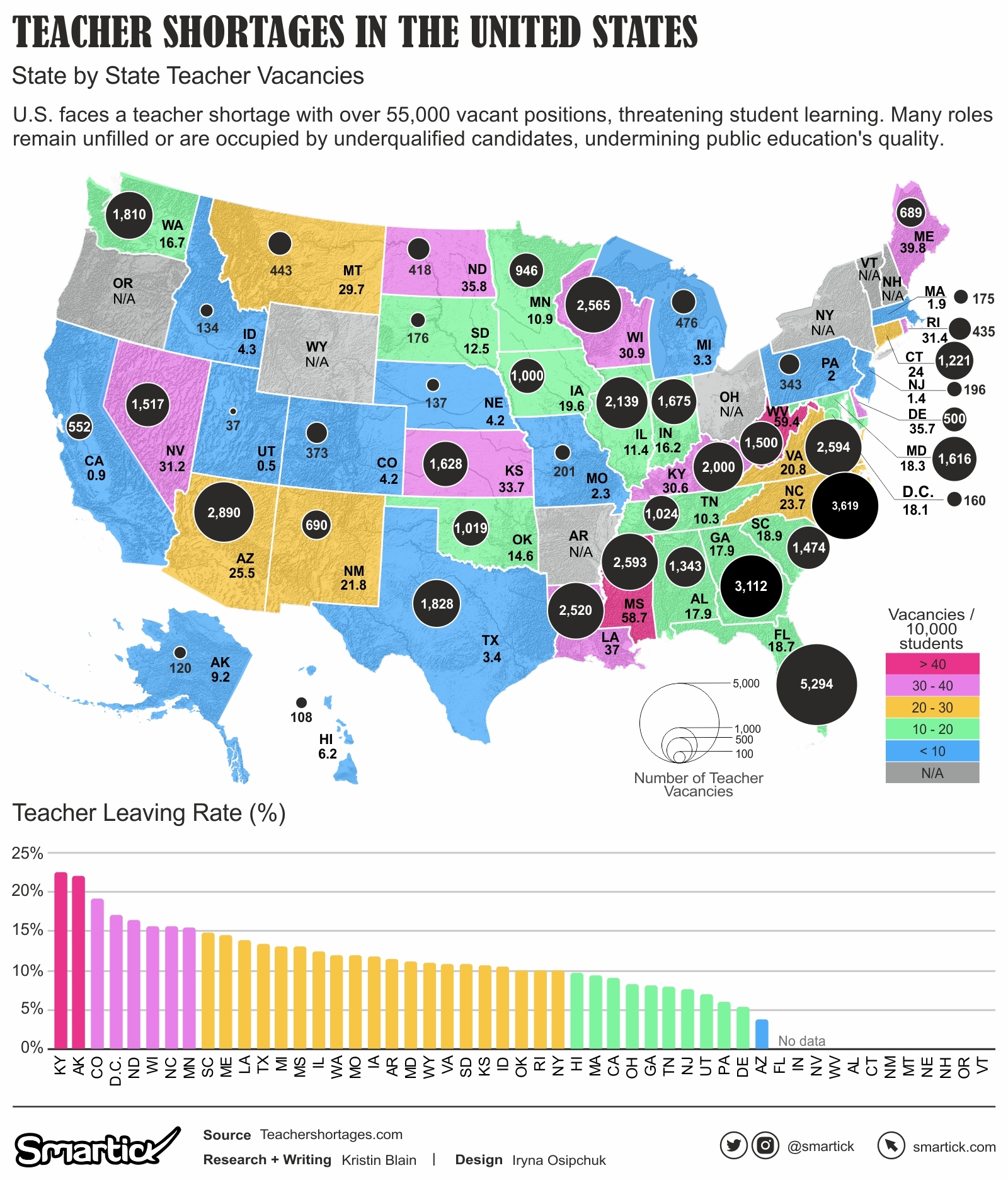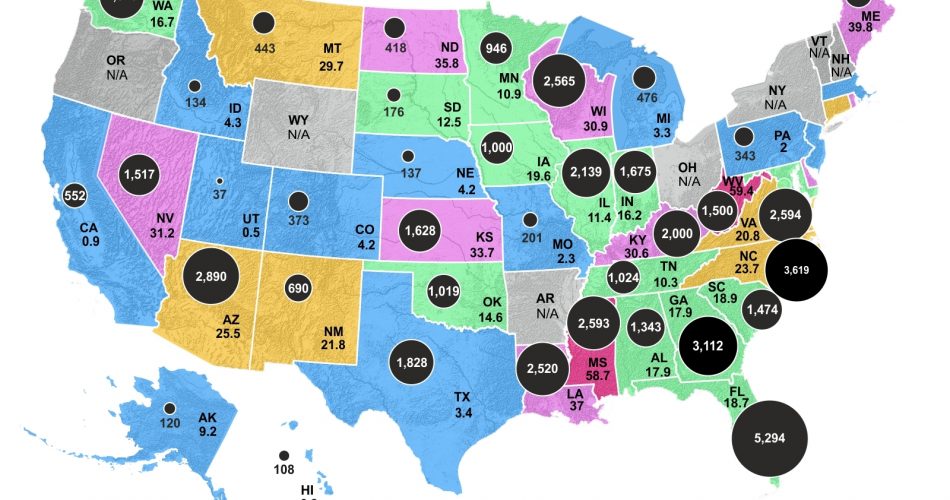
This article is brought to you by Smartick, an AI-powered math training app. With just 15 minutes a day, it helps your kids transform into math wizards.
Teachershortages.com estimates reveal a startling deficit: over 55,000 teacher positions lay vacant, while another 270,000 are manned by those underqualified. The implications of these figures reverberate far beyond administrative circles, touching every classroom across the nation. This directly impacts student learning, the morale of educational staff, and the overall efficacy of the educational process. A deep dive into state-by-state data helps unveil the intricacies of this nationwide predicament.

America’s Escalating Teacher Shortage Crisis
Our education system stands at the precipice of a daunting challenge: an escalating teacher shortage. Detailed statistics from teachershortages.com sketch a bleak landscape that varies drastically from state to state. To appreciate the true urgency of this issue, it’s imperative to analyze the data through the lenses of total teacher vacancies, the rate of educators leaving their roles, and the vacancy ratio relative to student populations. Combined, these dimensions sketch a comprehensive portrait of an educational system under duress, pointing out areas that demand immediate attention.
1. Teacher Vacancies
Regional disparities in teacher vacancies are significant. States like Florida grapple with nearly 5,294 anticipated vacancies for the 2022-2023 academic year. Georgia and North Carolina aren’t far behind, with their numbers surpassing 3,000. In comparison, Utah’s modest 37 vacancies for the 2021-2022 year seem almost negligible. Yet, these numbers might just be the tip of the iceberg. A considerable number of states, including Arkansas, Oregon, and Wyoming, haven’t released definitive figures, hinting at potentially higher vacancy rates lurking in the shadows.
2. Teacher Leaving Rate (%)
Retention of educators is another facet of this multifaceted crisis. The divergence in leaving rates between states is alarming. For instance, Kentucky reported an unnerving 22.5% leaving rate for the 2020-2021 academic year, overshadowing other states. Yet, states like Delaware present a glimmer of hope with a reduced 5.4% leaving rate in 2021-2022. The absence of data from states such as Florida and Connecticut muddies the water further, leaving educators, policymakers, and stakeholders in limbo about the true extent of this exodus.
3. Vacancies Per 10,000 Students
To get a comprehensive understanding of the crisis, we must view vacancies in light of student numbers. The disparities are jarring. West Virginia and Mississippi lead the pack with 59.35 and 58.67 vacancies per 10,000 students, respectively. On the other end of the spectrum, states like Utah and California fare significantly better, boasting numbers as low as 0.54 and 0.94. These discrepancies spotlight the uneven impact of the crisis and underscore the importance of targeted interventions.
The Quality Crisis Amid Reduced Vacancies
Merely filling vacancies isn’t enough. The surge in underqualified instructors, a byproduct of relaxed hiring standards during the pandemic, has given rise to another dimension of the crisis. These instructors, making up a significant portion of the 270,000 educators in positions for which they weren’t fully qualified, often lack the tenure of their certified counterparts. This leads to increased turnover and a turbulent educational environment. Their struggles, particularly in classroom management amidst rising misbehaviors, further exacerbate the shortage, pushing many to leave the profession. In the subsequent part of this article series, we will delve deeper into the data surrounding these underqualified educators and the impact they have on our education system.
National Impact and Wider School Staffing Issues
Beyond individual states, the repercussions of the teacher deficit are far-reaching. Major urban districts have experienced spikes in teacher turnover, with some surpassing pre-pandemic levels. But the shortages extend beyond teaching roles. From bus drivers to cafeteria workers, schools are stretched thin. These shortages, often more pronounced in areas with subpar teacher salaries or high student poverty rates, threaten the holistic educational experience.
Innovative Solutions and Positive Trends
Amidst the widespread challenges of the educational sector, innovation is becoming a crucial beacon of hope. One standout example is the four-day school week. Initially implemented as a cost-saving measure, this approach is now showing tremendous potential in attracting and retaining educational staff. The condensed schedule offers teachers an enhanced work-life balance, which in turn can lead to increased job satisfaction and reduced burnout. It also presents students with an extended weekend, offering them a chance for other enriching activities and experiences.
Moreover, as concerns about teacher shortages have gained national attention, there’s been a heartening surge in enrollments in teacher training programs. This indicates a renewed interest in the profession, perhaps driven by a combination of increased awareness, financial incentives, and the opportunity to make a tangible difference in young lives.
The American educational system is at a crossroads, faced with an alarming teacher shortage that permeates every state to varying degrees. While stark figures underscore the urgency of addressing the quantitative deficit, the qualitative aspect of ensuring educators are skilled and competent is equally crucial. As various states navigate these challenging waters, innovating and adapting, the broader mission remains clear: to ensure every student has access to a quality education. Addressing teacher shortages is not just about filling vacancies, but about safeguarding the future of our nation, one classroom at a time.

